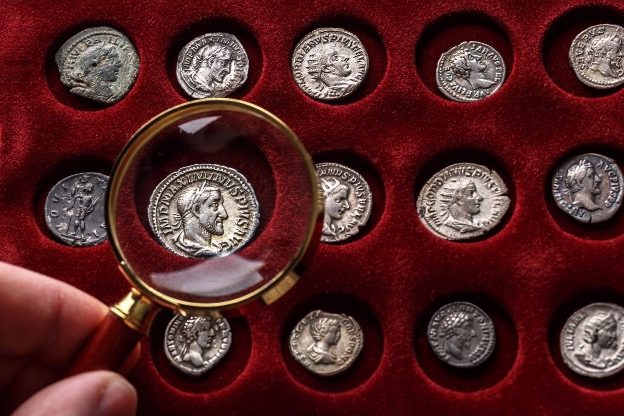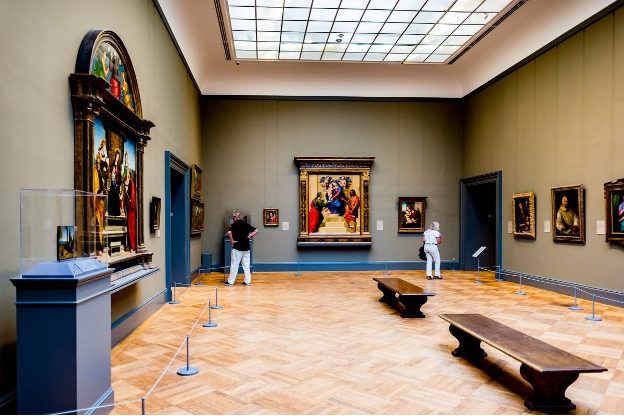Summary: NFTs are like digital collectibles; here are some simple questions to help you invest in the Top 1% Most Valuable NFTs. Subscribe here and follow me to get more crypto investing tips and tricks.
The NFT market has crashed.
I predicted this a year ago, when everyone was going ape over Bored Apes. (I will always try to tell you the truth, not what’s popular.)
Today, with the NFT market down 60% over the last quarter, and people liquidating their collections, I will once again say the unpopular thing: this is a great time for NFT bargain-shopping.
While I saw the crash coming, I also predicted that NFT technology is incredibly valuable. And I am especially excited about the possibility of NFTs that will earn revenue over the long term (through royalties, rents, and so on).
If you’re new to NFTs, or Non-Fungible Tokens, they’re like crypto collectibles. I have a few mental models that I use to think about NFT investors:
- The guy who collects rare baseball cards and is constantly hustling them at flea markets.
- The couple who buys fixer-upper homes, restores them, then flips them at a profit.
- The guy who collects valuable domain names, then sits on them until he finds a buyer.
- The bookstore owner who dabbles in rare book sales on the side.
- People who collect and resell classic cars, vintage wines, or fine art.
In theory, NFTs are like these one-of-a-kind assets. In practice, most NFTs are created by computer algorithms or amateur Photoshop users. That’s why I predicted the crash: most NFTs are simply bad art.
That said, most art is bad, which is what makes great art so highly prized. Similarly, some NFTs really are valuable – maybe 1%.
So, how do smart investors find the valuable 1%?
Our latest project is an NFT Investor Scorecard. Similar to our famous Blockchain Investor Scorecard, this will guide NFT investors through a few simple questions that they can use to value an NFT on a 1-to-5 scale.
We’ve looked through several years of NFT data and price history to come up with the following list of questions; we’d love your feedback on our ideas below.

Rarity
The primary value of any collectible is its rarity: a misprinted stamp, a unique artwork, or the first of its kind.
In the world of NFTs, we define two types of rarity:
- Artificial rarity, which is algorithmically driven. With CryptoKitties, for example, a computer algorithm randomly assigns traits, with some traits generated less frequently (like purple eye color).
- True rarity, which makes an NFT one-of-a-kind. Consider a Bored Ape owned by Eminem: that kind of rarity can’t be manufactured.
To determine rarity, NFT collectors can ask:
How unique is this NFT?
Is this NFT the first of its kind, the first in a series, 1 of 1 produced? Does it have a unique story or one-of-a-kind history? (Beware of computer-generated “rare traits.”)
What is the creator’s reputation?
Are they a household name? Do they have significant online influence or following? Do they have a multi-year track record of success, or are they a relative unknown?
How big is the supply?
If part of a series, is there a trusted, fixed limit? Or can more in the series be created indefinitely?
How much human effort was involved?
Is it a one-of-a-kind painting, film, or song that took hundreds of hours and talent to produce? Or is it slight variations on a Photoshop template?
What is the aesthetic value?
Perhaps the hardest question to answer: does something about it speak to your soul? Will you still be happy owning this if the price goes to zero?

Utility
Let’s call them NFWBs: Non-Fungibles With Benefits.
Look for NFTs that can generate revenue: whether through licensing and royalties (as with WOW), or building and developing (as with LAND). These NFTs can become mini-businesses, with their own income streams.
Or, look for NFTs with IRL benefits: if you can use them in the real world, that may bring you more joy than a JPG that sits on a blockchain.
To determine utility, investors can ask:
Does the NFT come with additional benefits?
Does it get you into high-value events? Allow a better in-game experience? Give you access to exclusive properties, clubs, or communities?
Does the NFT give you IP rights?
Can you legally license it for T-shirts or a Netflix series? Are all rights fully transferred to you? (See Galaxy Digital’s NFT Licenses: Fact and Fictions.)
Does the NFT allow you to build on it?
Like real estate, can you improve the property to increase its value, or is it fixed like a JPG?
Does it have a favorable location?
The three most important factors for real estate: location, location, location. Is it in a favorable ecosystem, in a favorable neighborhood, near other favorable properties? (Metaverse or real estate NFTs only.)

Future Value
Any collectible investment needs to consider future resale: is it a passing fad like Beanie Babies, or does it have the endurance of fine wines?
This is especially tricky with NFTs, since the market is so new. But smart NFT investors can still ask questions such as:
Does it have a strong history of ownership?
Does it have a history of reputable owners, with each paying progressively higher prices, over the course of several years?
Does the NFT have good liquidity?
Will it be easy to resell on OpenSea or SuperRare, i.e., is it part of a hot-selling collection, creator, or community? How many active users does it have?
Is it built on a leading blockchain platform?
Is it built on Ethereum (the industry standard), or some other chain? Is it stored 100% on-chain, or does it sit on a server somewhere?
What is the scope of the NFT project?
Is it part of a larger creative vision, like Decentraland? Do they have a credible, long-term roadmap?
What is the long-term potential of the market?
NFTs come in many different flavors, from art to real estate to gaming. Look at analyst forecasts for your market, and examples of top-selling NFTs to date.
We Welcome Your Feedback
This is a first pass at the questions we think NFT investors should be asking before parting with their hard-earned money.
We’d love to hear how you would improve these questions. Just drop us an email, and we’ll report next week with your feedback.
Together, let’s find the 1%.
With grateful appreciation to Zebpay, as well as William M. Peaster’s terrific series on valuing NFTs, Part 1 and Part 2.
- Bitcoin
- Bitcoin Market Journal
- blockchain
- blockchain compliance
- blockchain conference
- coinbase
- coingenius
- Consensus
- crypto conference
- crypto mining
- cryptocurrency
- decentralized
- DeFi
- Digital Assets
- ethereum
- How To
- machine learning
- non fungible token
- plato
- plato ai
- Plato Data Intelligence
- PlatoData
- platogaming
- Polygon
- proof of stake
- W3
- zephyrnet











